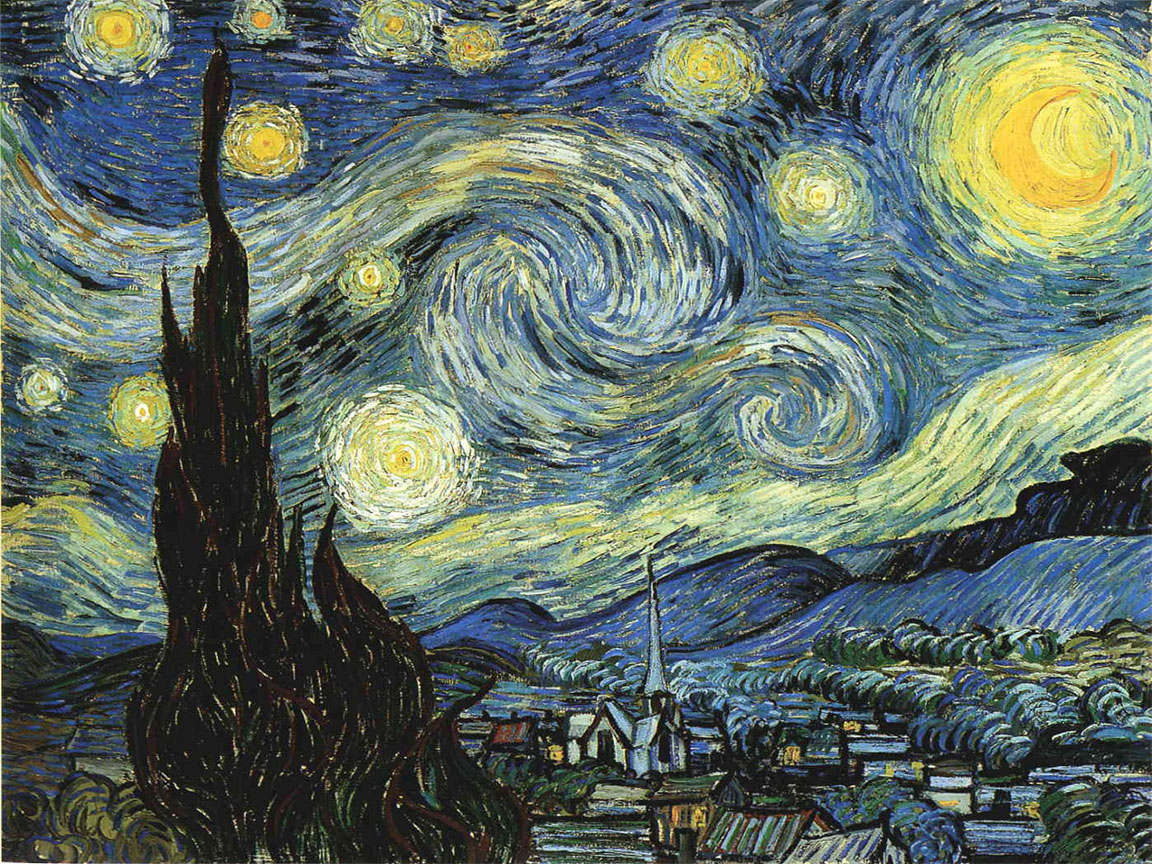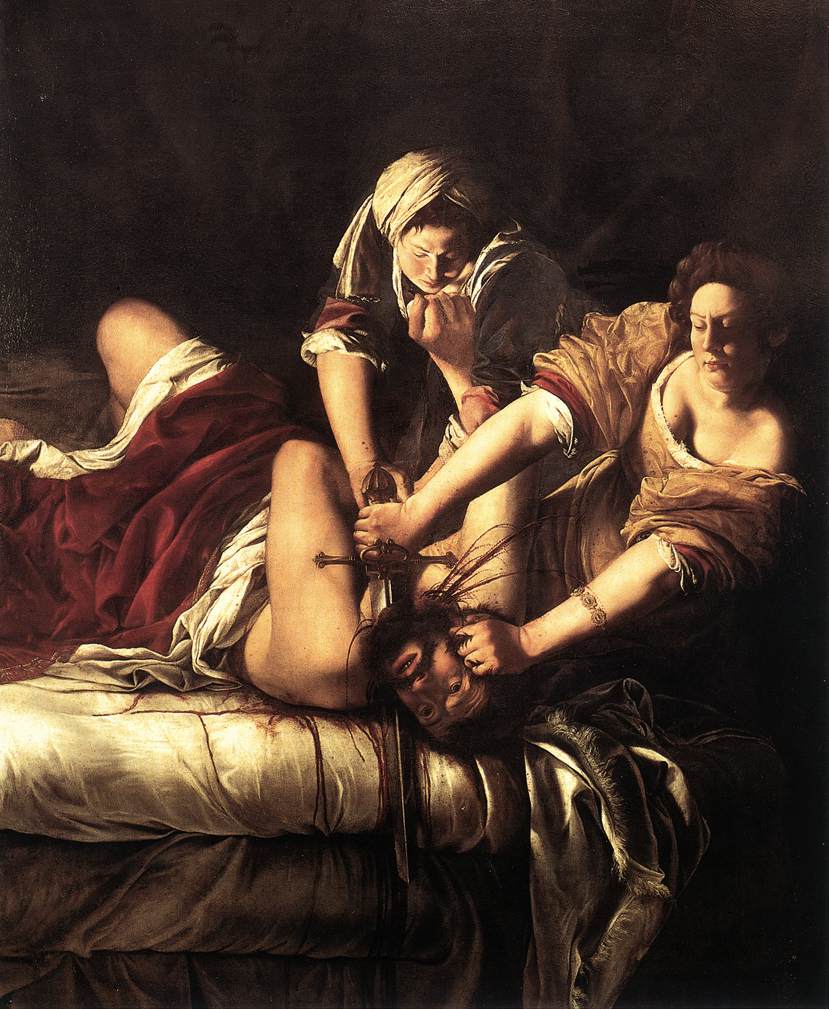We use historical information and empathy in an attempt to view the art through the eyes of the people contemporary to its creation (known as appreciation) and from different, sometimes critical, perspectives.
Ex: It is important to view Northern Baroque art through Calvinist eyes in order to appreciate (and understand) it. So on and so forth.
Appreciating art is different from liking it. I often give this demonstrative example:
One must make a distinction between taste and educated taste. First, I must insist that in order to be empathetic of all people, I must understand that people's reasons for viewing art vary greatly-- some view art for catharsis, some for enjoyment, others view art for education. Thus, one's pursuit with art may only require taste, and not education (to educate their taste).
Many people would want to go to the Louvre to see Mona Lisa. But many people would actually want to have Van Gogh's Starry Night in their home.
When people say that they do not "know" about art, they are victims of ambiguous and assumptive language. There is nothing that one needs to know in order to like art. People instinctual know what they like. One needn't any historical knowledge, only a genuine aesthetic reaction, which we are biologically programmed with (i.e. bright colors are used in nature to attract attention, like flowers, etc). This is referred to as taste.
Lets us first disambiguate taste. Taste does not refer to appreciation, although, we erroneously treat them as synonyms in the colloquial. Appreciation requires education. Taste, or what I would called instinctual taste is serendipitously, subconsciously developed by your experiences, disposition, personality, etc. Taste is what you are moved by. Your taste, however, does not always serve you or your image well (i.e.: your taste may lie in Sports Illustrated posters, Kitch, the simplistic, the obvious, the erotic). Taste has historically been used as a test of sophistication, morality, and character-- a way to show discipline in character, order, and intelligence.
English satirist, William Hogarth, jabs at the English aristocratic facade ( their taste and sophistication) in his series Marriage a la Mode. Below is a work from this series.
"Hogarth...portrayed grand interiors as fitting settings for his patrons, but here he shows splendid decor as a contrast to the trivial pursuits of the young aristocrats: paintings of martyred saints overlook card tables; the dignified bust of a Roman matron is surrounded by amusing oriental figures bought by a flighty young bride with her stays undone and hair falling over her brow." - The British Museum
"...the series of paintings, the marriage of the Viscount and the merchant's daughter is quickly proving a disaster. The tired wife, who appears to have given a card party the previous evening, is at breakfast in the couple's expensive house which is now in disorder. The Viscount returns exhausted from a night spent away from home, probably at a brothel: the dog sniffs a lady's cap in his pocket. Their steward, carrying bills and a receipt, leaves the room to the left, his hand raised in despair at the disorder." - National Gallery
[Notice the partially hidden painting of a nude woman in the back room next to the displayed portraits.]
Good taste as a projection of sophistication to the world/ instinctual taste is hidden beneath it
Because your good taste is often used to represent you or your morals, it is often embarrassing when your instinctual taste differs from good taste. For instance: I did not enjoy anything about Michelangelo's Sistine Chapel frescoes other than its impressive scale. I did not enjoy the Mona Lisa. I did not enjoy Picasso's Les Demoiselles d'Avignon. I appreciated them, but they were not my instinctual taste, they did not move me viscerally. I appreciated them, which required education. But: Appreciation, which requires thinking about what you know about the work, sometimes translates into enjoyment-- a visceral, experiential response! Sometimes, you have an instinctual, visceral reaction to a work and once you have education about it, your enjoyment of it increases! Having no reaction to a work and the education you receive transforming into visceral enjoyment beyond appreciation... <-- This is the goal! Education facilitates appreciation, which, when planted, can grow into aesthetic/emotional/visceral enjoyment!
[Thank you for bringing your mind on this journey to aesthetic pleasure. Stick with it because the rewards extend beyond the images we investigate in this blog-- your eyes and mind will speak to each other in a different way and you will see differently.]
Next up: the opposing forces of Poussin and Rubens in the Baroque France, Velazquez and Ribera in Baroque Spain, and then onward toward the Enlightenment!
Stay well,
Arbiter.


No comments:
Post a Comment